Munich is the beautiful and cozy capital of the southern German state of Bavaria and at the same time the northern gateway to the Alps. The city is home to world-renowned brands such as the BMW cars and the Bayern Munich football club, and it is the home of the annual Oktoberfest which is held to the delight of millions of visitors.
Dukes, kings and emperors have resided in the city over time, and they have all left their mark of the city with a lot of buildings from different architectural eras. You can enjoy castles, churches, gardens, monuments and much more. You just have to walk around the old town and in the central neighborhoods to explore it all.
The landmark Frauenkirche and the small but wonderfully decorated Asam Church are buildings among the religious highlights. City gates, plazas and large public institutions constitute other must see’s on a trip to Munich, where the 20th-century historically interested can also take a closer look at Nazi buildings such as the Führerbau.
If you want to get a little out of town, it is not far to the Alps, beautiful lakes and several architectural and cultural sights. Munich is thus a good starting point for a city break as well as a trip to all of the southern German area, which in seasons vary from alpine skiing holidays to hot summer trips.
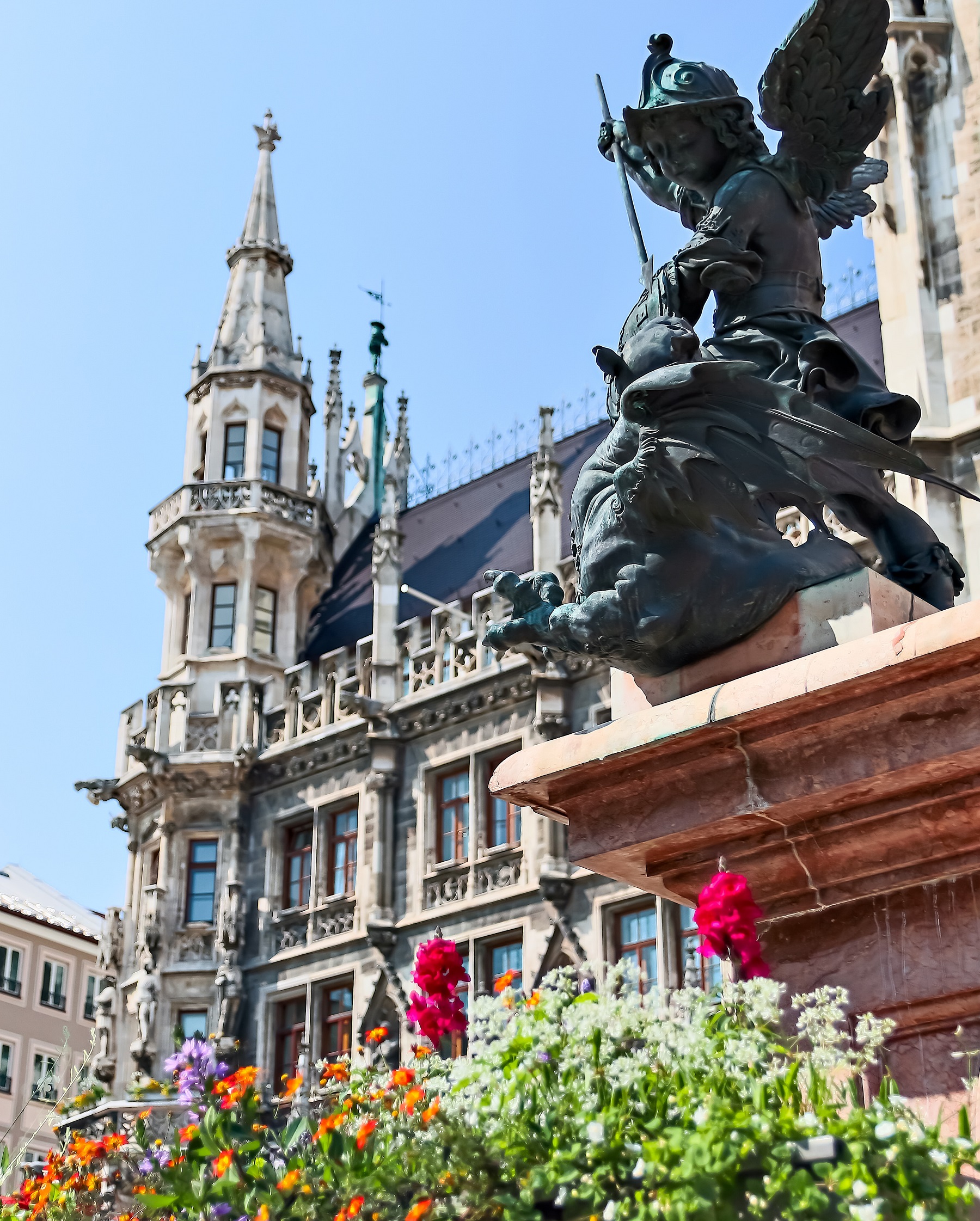
The Neues Rathaus is Munich’s impressive town hall building, built in Dutch Neo-Gothic style in the years 1867-1909. The building is richly decorated with i.a. statues of Henry the Lion and the Wittelsbach dynasty.
This is Munich’s old city castle, which i.a. offers beautiful interiors and the state of Bavaria’s collection of crown jewels. The Residenz today consists of three primary buildings; Alte Residenz, Königsbau and Festsaal. The Residence complex is open as a museum.
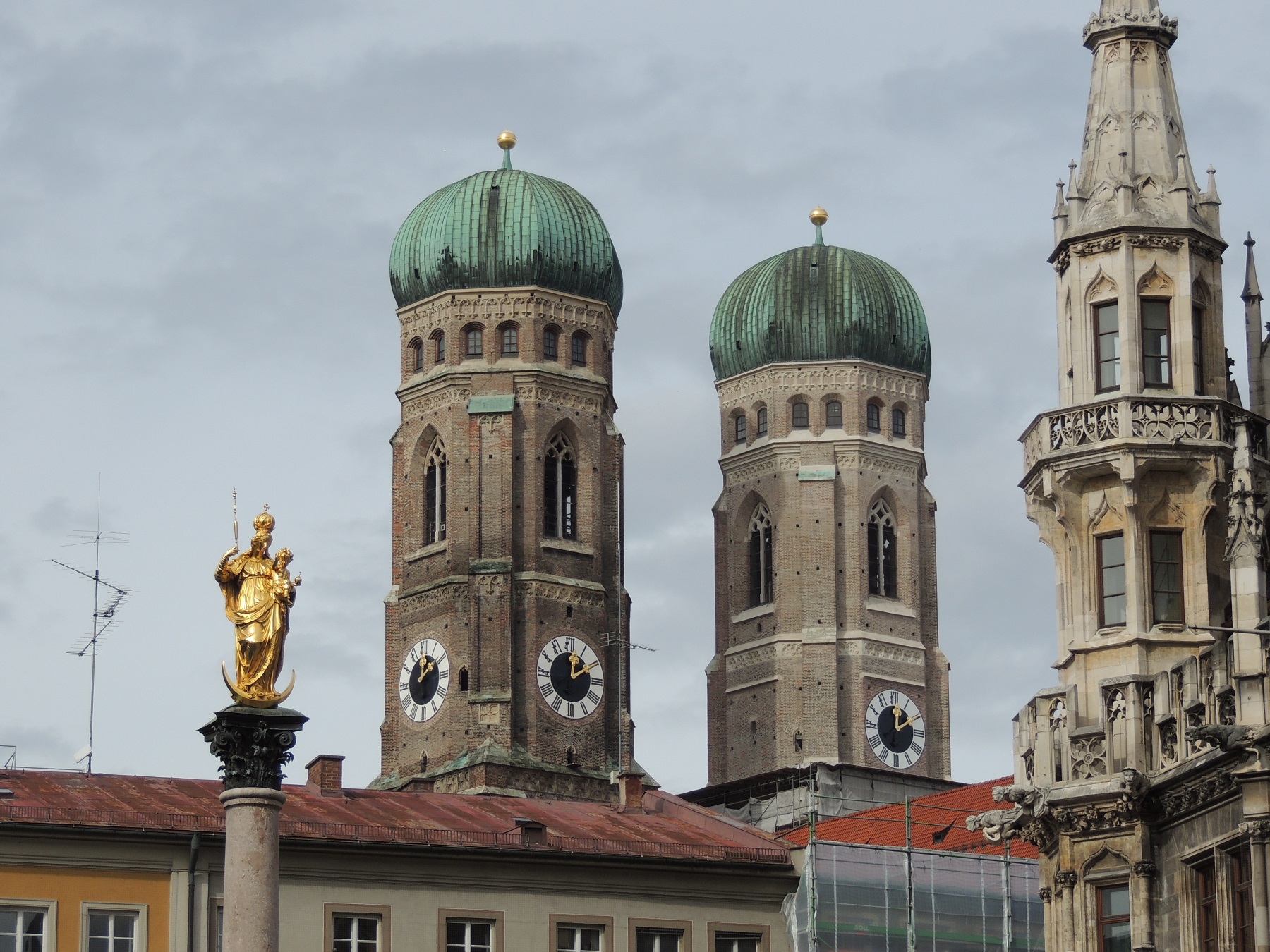
This is the cathedral of Munich and the city’s largest church. The church’s famous twin towers stand as the city’s landmark and can be seen from a long distance. The interior of the church is worth seeing with many fine works of art.
The Neue Pinakothek Art Museum houses a distinguished collection of European paintings from the 18th century to the early 20th century. Here are works by i.a. English landscape painters and French Impressionists.
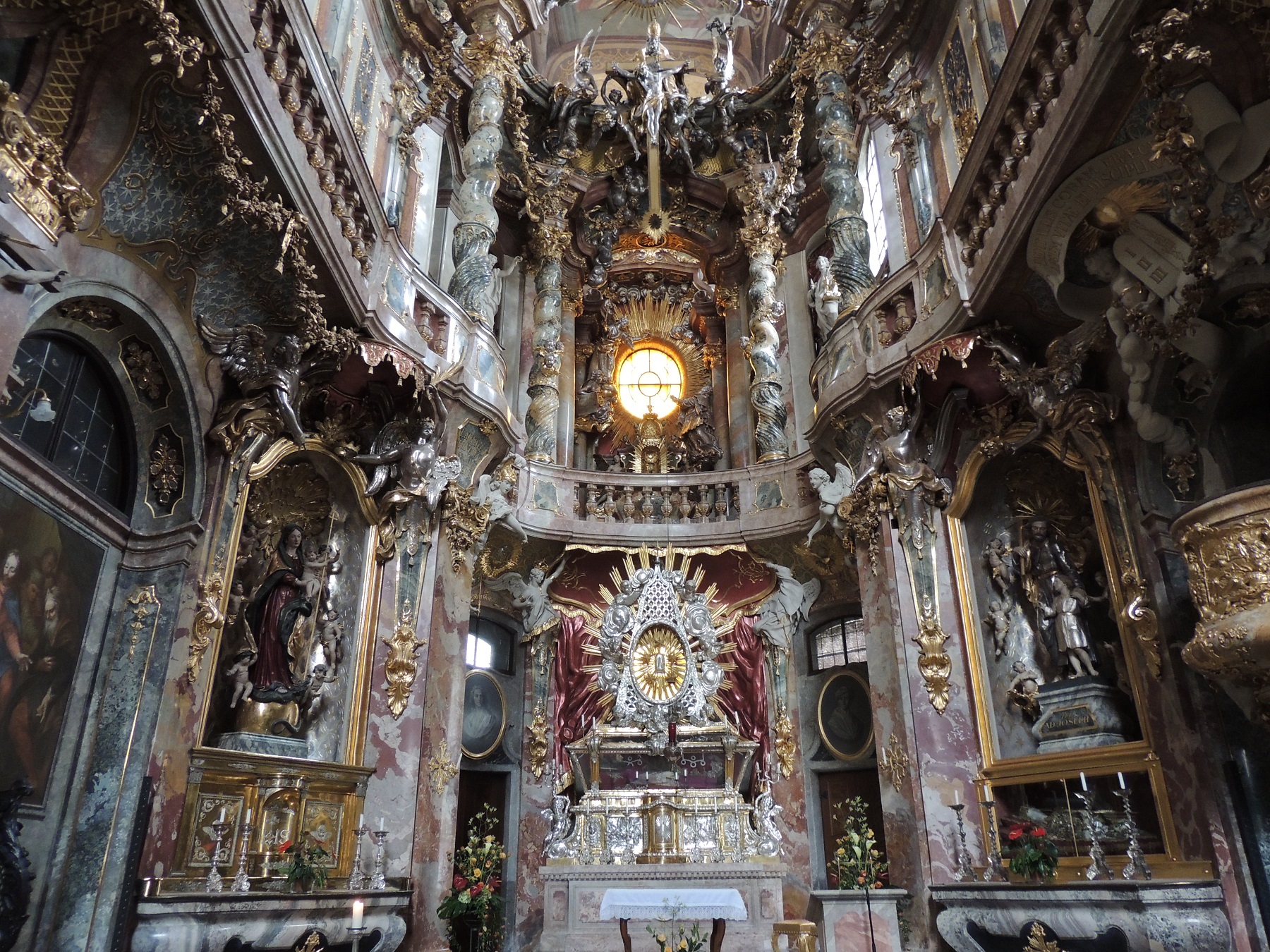
Asamkirche is one of Munich’s smallest churches, but also one of the most beautiful. It stands as one of Southern Germany’s masterpieces from the Late Baroque with a sumptuous church interior.
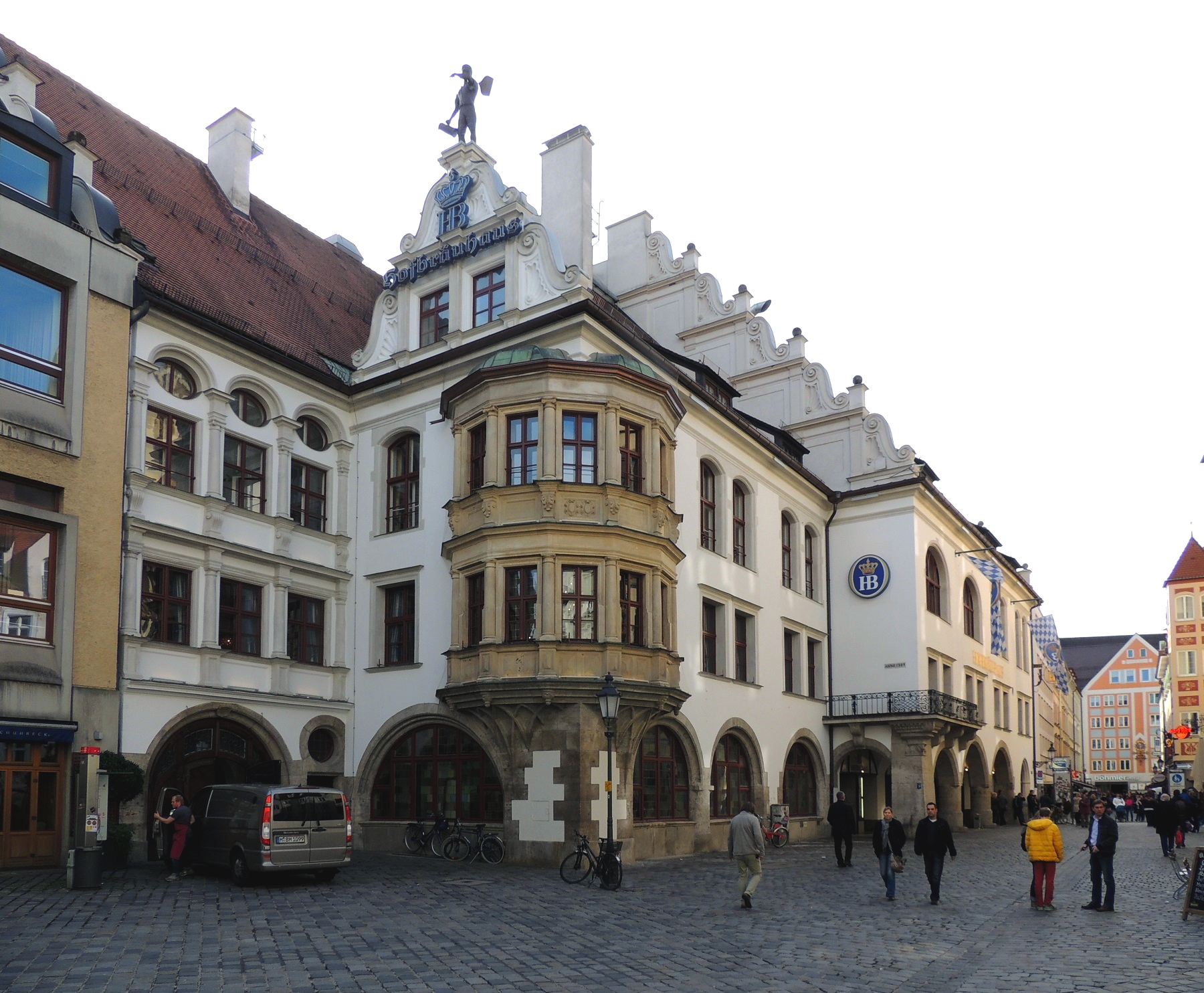
The Hofbräuhaus is a famous Bavarian brewery founded by Duke Wilhelm V in 1589. The place became better known, as Adolf Hitler founded the NSDAP here on 24 February 1920. The brewery is today an atmospheric pub.
At this art museum you can see a unique collection of works by i.a. Albrecht Dürer, Rembrandt, Frans Hals, van Dyck, Rubens, Giotto, El Greco and Velázquez from the Middle Ages to the 18th century.
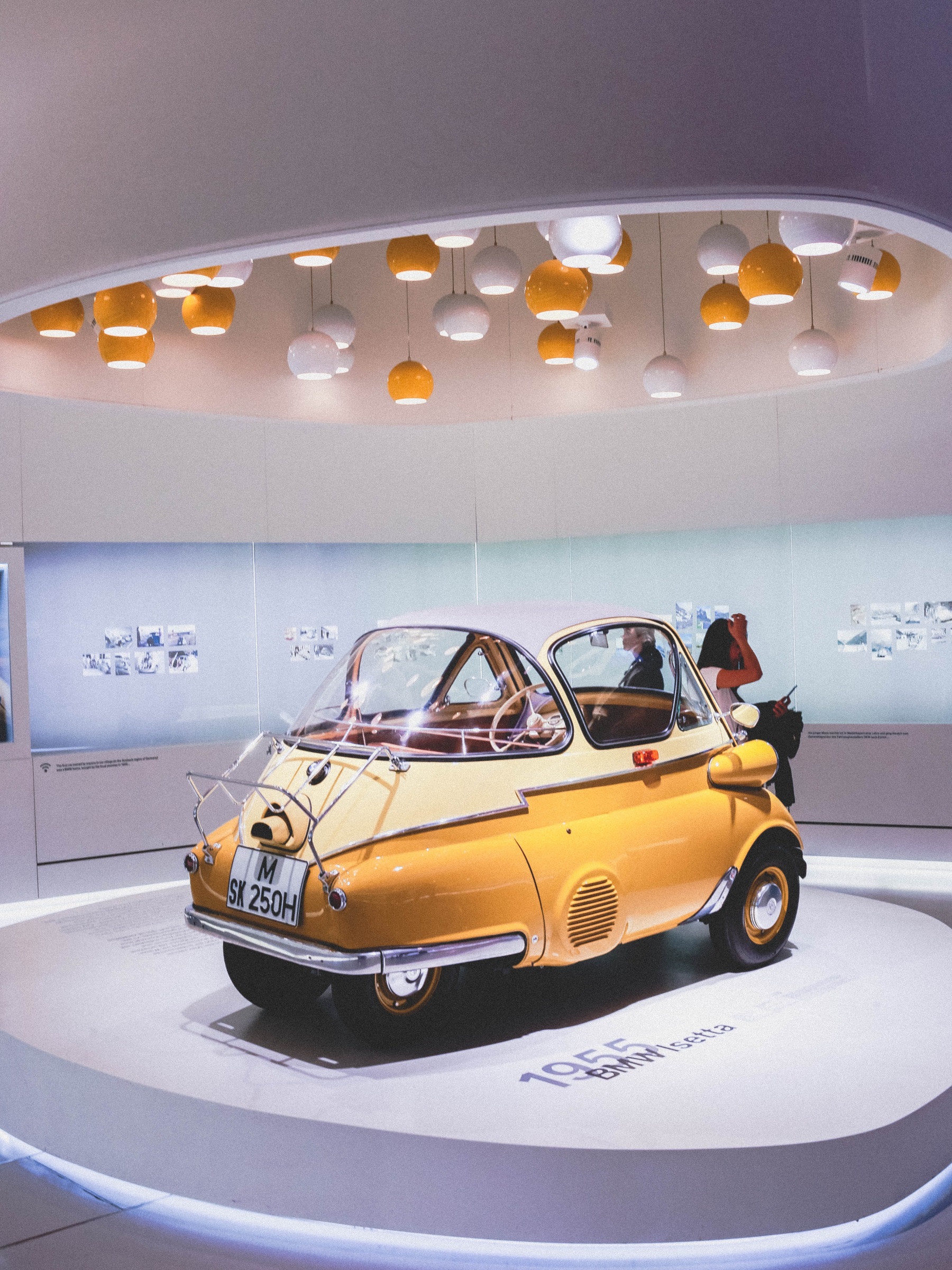
BMW Welt is a fantastic car museum located at the company’s headquarters. The core is BMW’s own cars, but the entire group’s production is shown. They count brands as Rolls-Royce and MINI.
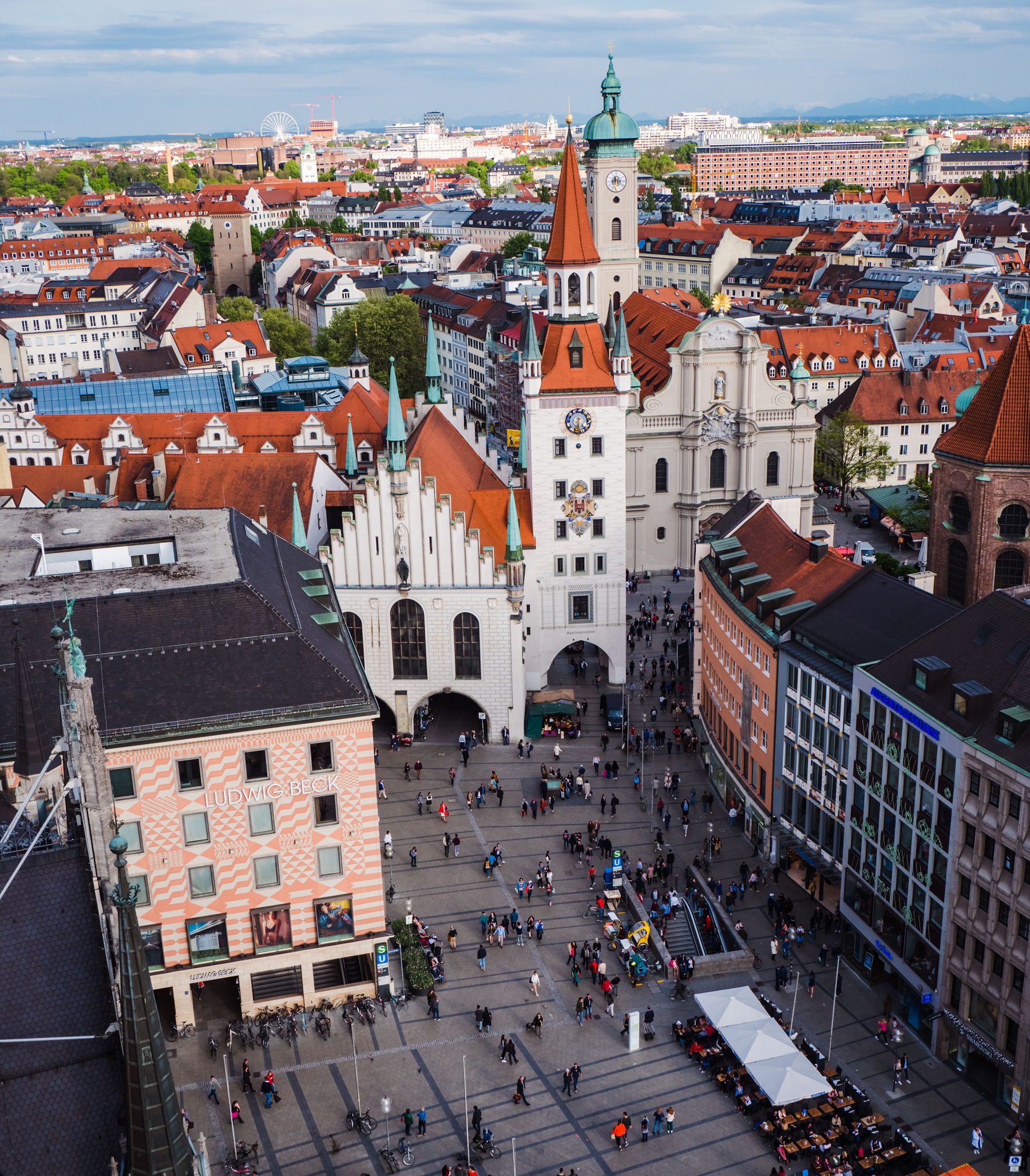
This square is the center of Munich, and is home to both Munich’s old and new town halls. In the square you can see the Mariensäule, which is a column that was erected on the square by Elector Maximilian I in 1638.
St. Michael’s Church is a beautiful Jesuit church built in the years 1583-1597 with the Church of the Gesù in Rome as inspiration. The church offers one of the city’s most beautifully decorated interiors.
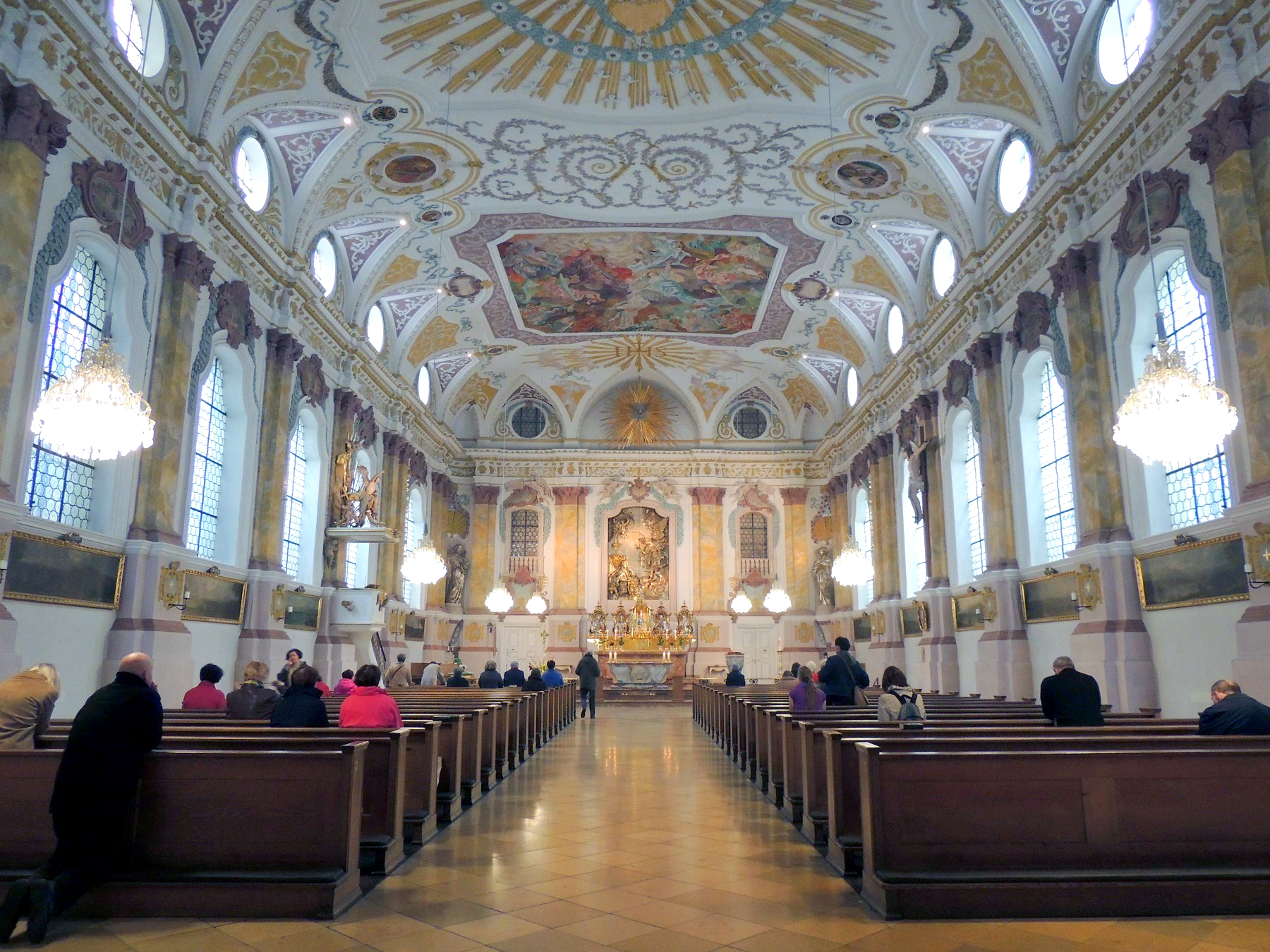
Bürgersaal is a house built in 1709-1710, which since 1778 has served as a church with a very beautiful interior. The building consists of a lower church and an upper church.
This is a city museum that in an interesting way depicts the exciting history of Munich. The museum is located in the former armory, and here you can e.g. see a model of Munich in 1570.
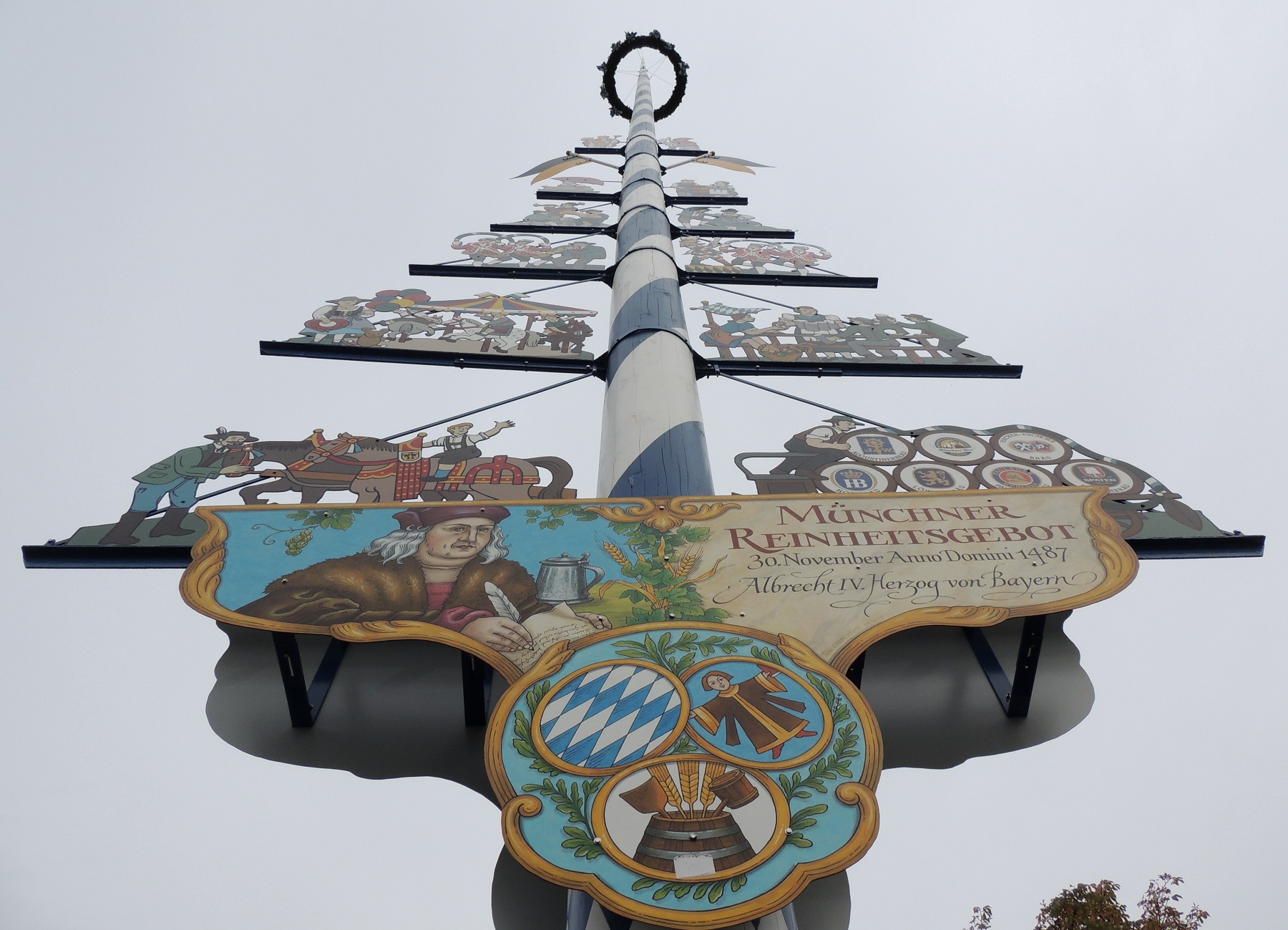
This is Munich’s wonderful food market, where you can buy many Bavarian and German specialties in the many stalls, shops and restaurants on the market.
Isartor is one of Munich’s four main gates from the 14th century fortresses around the city. The gate stands today as at the time of construction, and in the city one can also see the other two preserved gates; Karlstor and Sendlinger Tor.
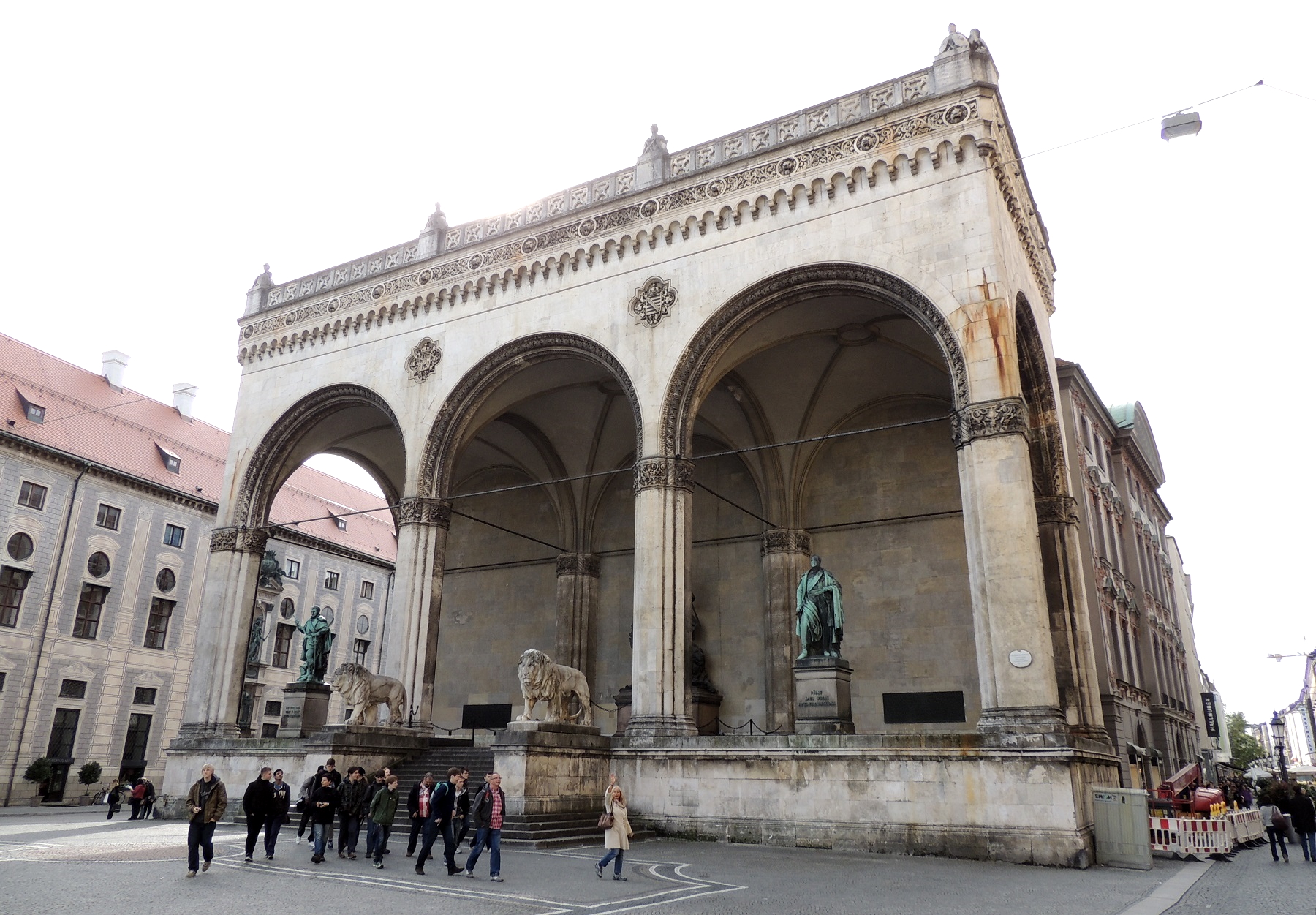
This building was erected in the years 1841-1844 in memory of famous military commanders in Bavaria. Feldherrnhalle became historically famous when a Nazi march ended here on November 9, 1923.
Haus der Kunst is an exhibition building that stands as a fine example of 1930s architecture in Germany. The architecture was to symbolize an art temple, and the exhibition Große Deutsche Kunstausstellung was held here 1937-1944.
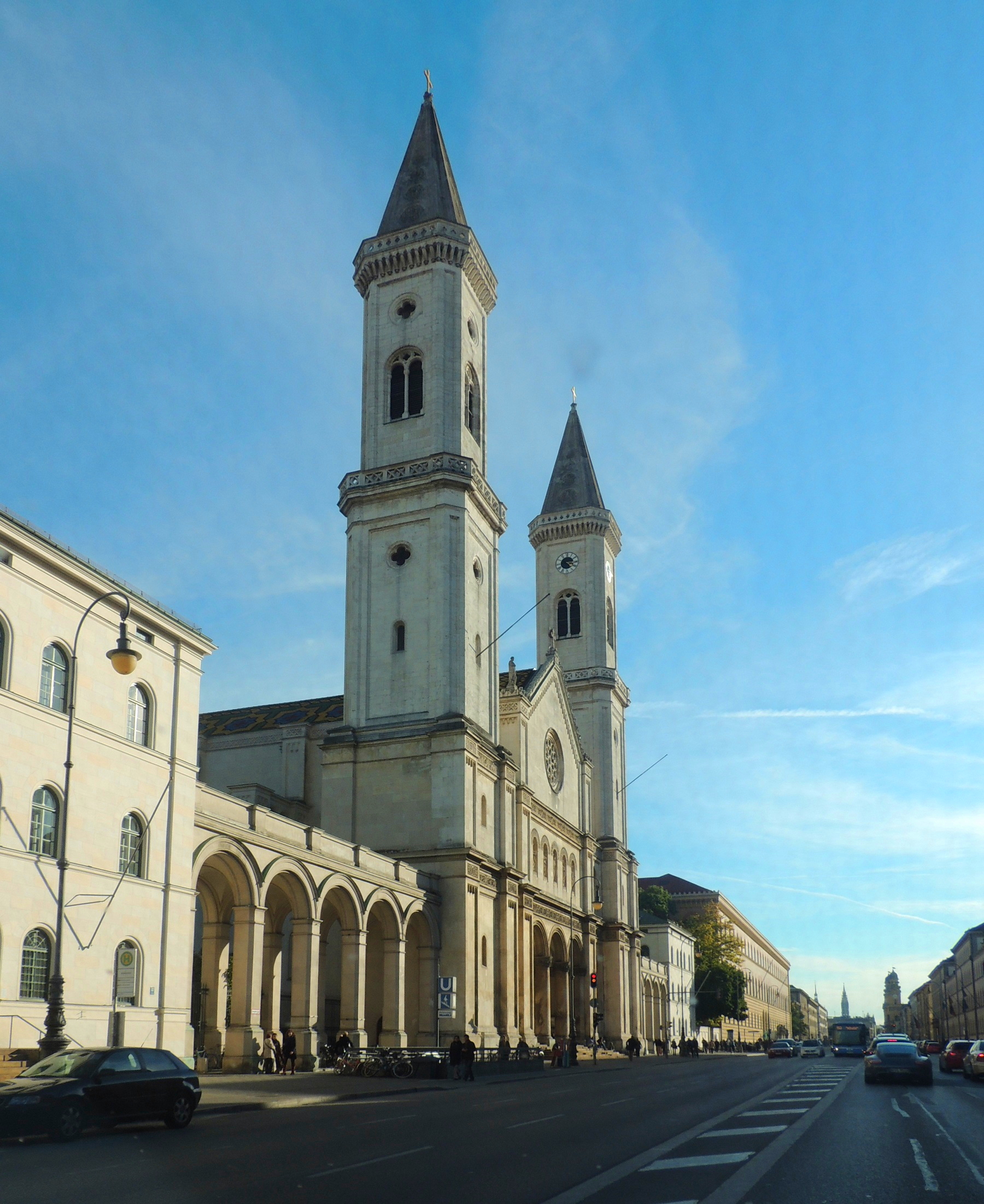
The magnificent Ludwigstraße was developed in the early 1800s under the rule of Ludwig I as the city’s new and impressive road to the center of the royal residence city. There are several sights along the nice street.
The Königsplatz square was laid out by Ludwig I as the center of the city’s art and art museums. The impressive building, the Propyläen, stands in the middle, and the Glyptothek and Staatliche Antikensammlung museums are on either side. It is a beautiful architectural ensemble.
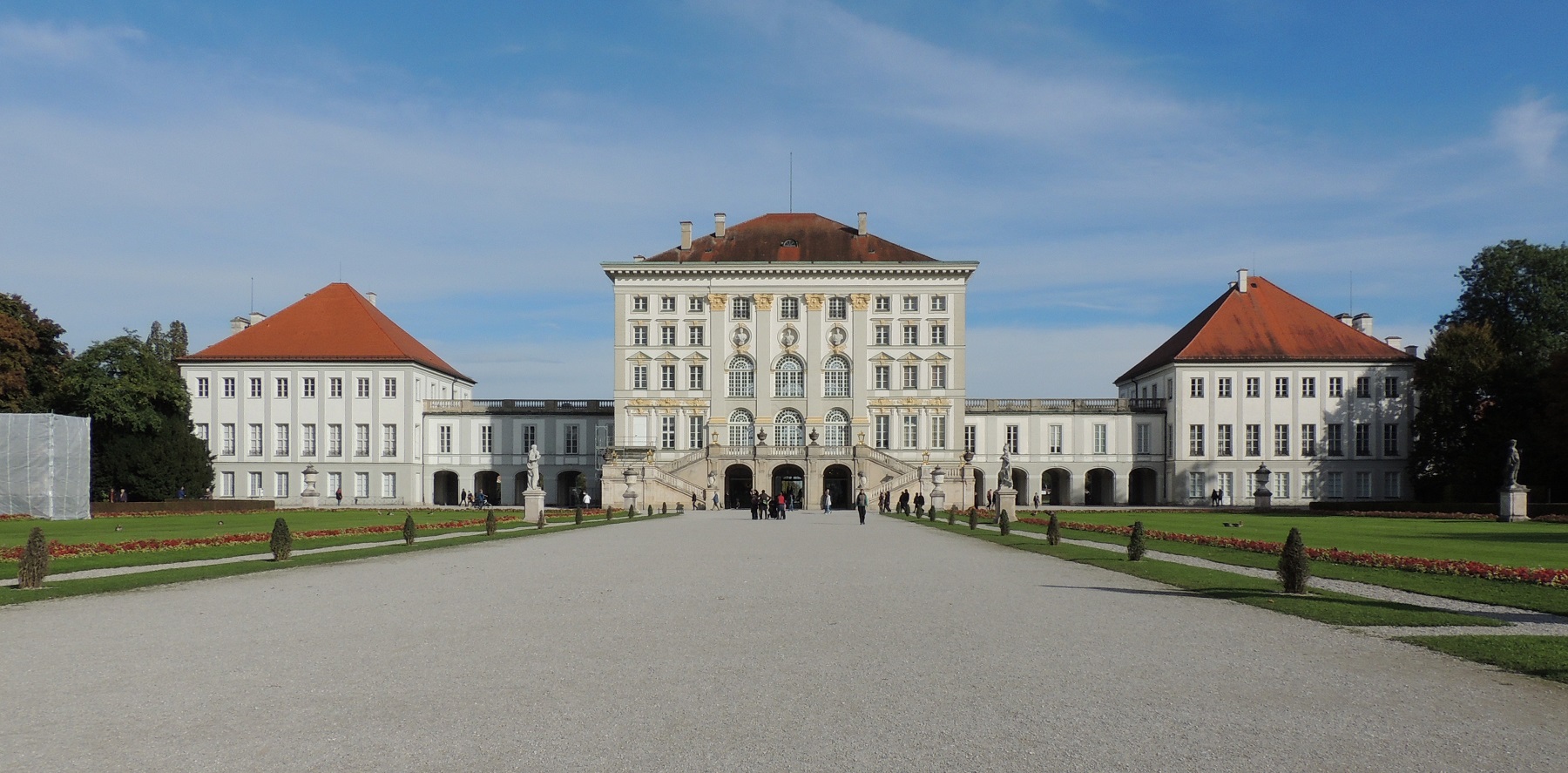
Nymphenburg is a sumptuous baroque palace built in the years 1664-1675, and a beautiful park was laid out as well. The castle was for centuries the summer palace of the Bavarian rulers, and it is today open as a museum.
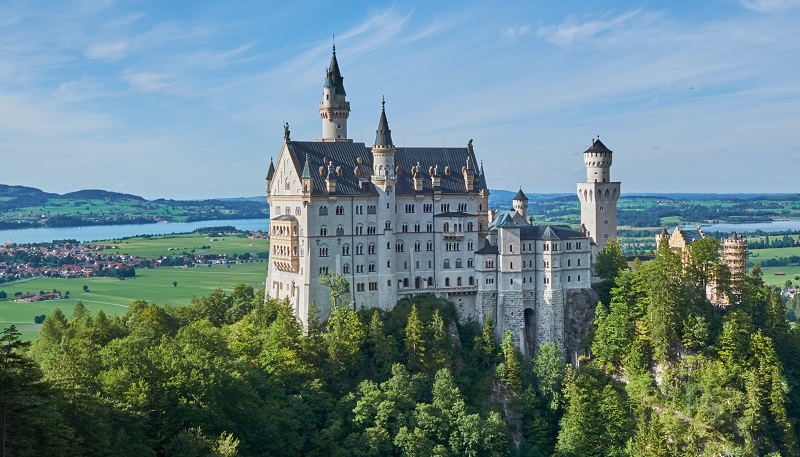
Neuschwanstein Castle is one of Germany’s and the world’s most iconic castles. It was built at the foot of the Alps by King Ludwig II, who was also called the fairytale king. The castle was built from 1869 and was ready for use in 1884. It is both the location and the architecture of the castle that are impressive.
In the town of Dachau you can see the castle Schloß Dachau, which was the favorite country house for the court of Munich in the 18th century. The city is also known for the former concentration camp, which was in operation 1933-1945. The camp is today a museum.
Augsburg is a cozy Bavarian provincial town with a rich history, which means that there are many sights to see here. These include about the Renaissance town hall from the 17th century and the Church of Our Lady.
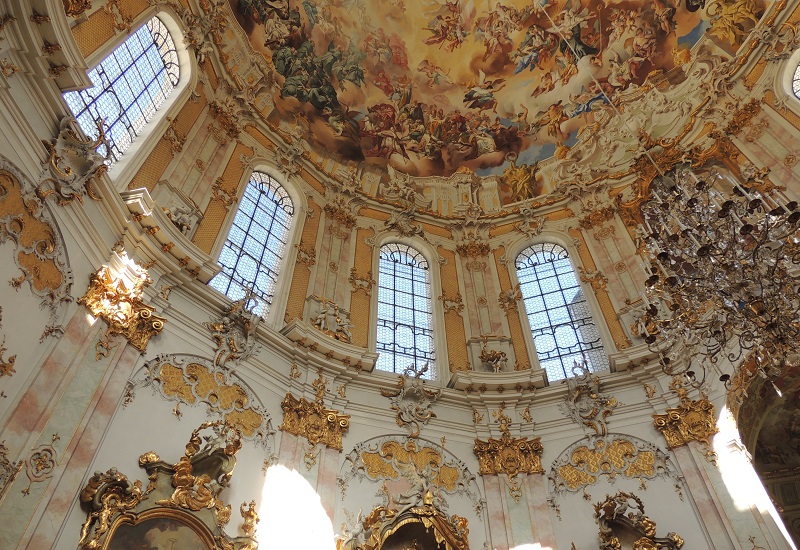
In the middle of the southern German mountains you can visit the village of Ettal, which is home to a Benedictine monastery with a large church with a sumptuous interior. The monastery was founded on 28 April 1330 by Emperor Ludwig of Bavaria.
Zugspitze is Germany’s highest mountain with its 2,962 meters/9,717 feet, and unlike many other alpine peaks, the Zugspitze is easily accessible to tourists. At the very top there are three peaks, and here is a restaurant and a view terrace. You can access the top with the Tyrolean Zugspitze Cable Car from the Austrian town of Ehrwald. You can also use the Bavarian Zugspitze Railway, which runs inside the mountain to the Zugspitzplatt, from where a second cable car takes you to the top. The third possibility is the Eibsee Cable Car.
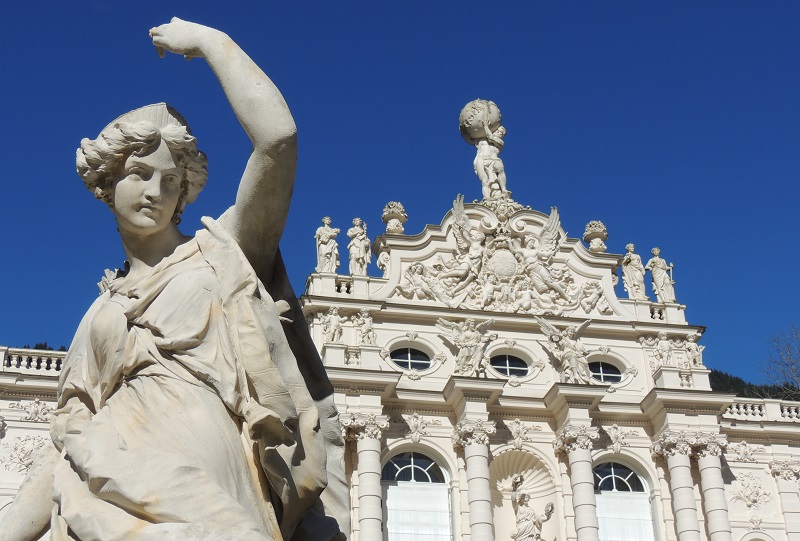
In the beautiful mountain valleys at the foot of the German Alps lies the small beautiful castle Linderhof, which was one of King Ludwig II’s residences. King Ludwig II also started the construction of two other castles in Bavaria, but Linderhof was the only one he managed to see in finished condition.
Lake Chiemsee is also called the Bavarian Sea, and it forms a beautiful nature reserve with many opportunities for relaxation and sightseeing. The main attractions are a trip on the lake itself with the two islands, Herreninsel and Fraueninsel. For example, you can see the impressive Herrenchiemsee New Palace.
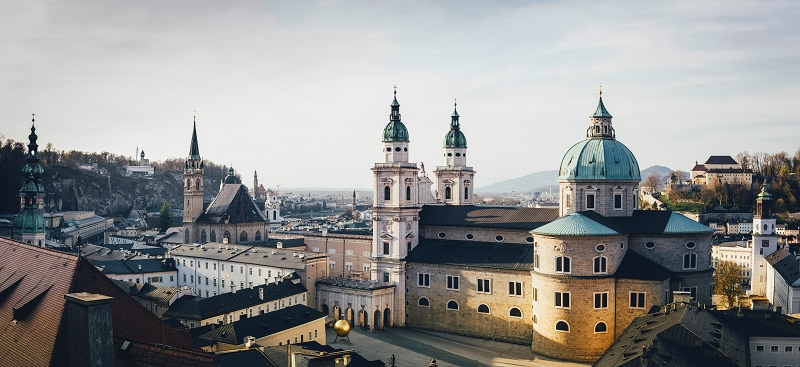
Austrian Salzburg is one of the architectural gems of the Baroque era, and the city is also Mozart’s hometown. The city center offers countless sights, and music lovers flock to the city every year to attend the world-famous festivals.
Theatinerstraße 15
fuenfhoefe.de
Karlsplatz 21-24
galeria-kaufhof.de
Bahnhofplatz 7, Leopoldstraße 82
hertie.de
Neuhauserstraße 18
karstadt.de
Hanauer Straße 68
olympia-einkaufszentrum.de
Ollenhauerstraße 6
einkaufscenter-neuperlach.de
Marienplatz, Karlsplatz, Neuhauserstrasse, Kaufingerstrasse, Maximilianstrasse, Residenzstrasse, Theatinerstrasse
Bavaria Filmstadt
Bavaria Filmplatz 7, Geiselgasteig
filmstadt.de
Circus Krone
Circus-Krone-Straße 1
cirkus-krone.de
Munich Zoo Hellabrun Tierpark
Tierparkstr. 30
zoo-munich.de
Märchenwald Wolfratshausen
Kräuterstraße 39, Wolfratshausen, 28 km/17 mi S
maerchenwald-isartal.de
Skyline Park
Hartfeld 1, Bad Wörishofen, 80 km/50 mi W
skylinepark.de
Wildpark Poing
Hauptstraße 29, Poing, 22 km/13 mi E
wildpark-poing.de
area of present-day Munich has been inhabited since Neolithic times. In recent times, monks came from the Benedictine Order and settled in the 7th century.
After this is meant Munich founded in 1158 by Heinrich der Löwe, who two years before had become Duke of Bavaria; a post he sat on as Heinrich XII to 1180.
1158 is at least the year Munich was first mentioned in a document, and the city’s start was the bridge over the river Isar, which Heinrich der Löwe had built just here at the Benedictine monastery. The bridge became a traveler’s only way across the river, with the Duke destroying Otto von Freising’s nearby bridge, forcing people to cross the bridge at the monastery, and they had to pay for it.
Already at a German Reichstag assembly in Augsburg in 1158, Munich’s status and rights had been established, and in 1175 Munich achieved official city status, which caused the defense works to be built around it.
In 1180, Heinrich der Löwe was deposed and replaced by Otto I. At the same time, the city had to look under the bishop of Freising. Otto I was the first ruler of the Wittelsbach dynasty to rule Bavaria until 1918.
1240 became a landmark for the city’s development, as it was here that Munich’s government officially transitioned from Freisingen’s bishop to the Wittelsbach family. In 1255, Munich was made the capital of the area’s duchies.
The next century, Munich was continuously expanded as the capital of the region, and further defense works were erected. The city wall was started in 1293, and several times the city wall was expanded so that Munich’s area could be enlarged in the same way.
At the same time, the city was experiencing a commercial boom, primarily because it was granted monopoly on salt trade by Duke Ludwig IV of Bavaria. Ludwig IV had become German king in 1314 and German-Roman emperor in 1328. It was the same Ludwig who built the Alter Hof as a residence and government complex in Munich; Alter Hof is still in the center.
In 1327 most of the city was destroyed by a fire, but that did not stop the development. Munich was both rebuilt and expanded. The trade flourished, and the city’s development was almost only slowed by plague epidemics, which ravaged the city for the first time in 1349. Large buildings were started, for example by Frauenkirche in 1468 and two years later by Alte Rathaus.
Munich and Bavaria are known today for countless good beers, and a significant part of that success was created in 1487 when the beer brewing regulations were enacted.
However, the world renowned Reinheitsgebot was first introduced by law in 1516. This law is one of the first food laws in the world as it stipulated that nothing but water, yeast, malt and hops should be included in beer. Reinheitsgebot is not a law today, but is still followed by many German brewers in their beer brewing.
By 1504, Munich’s population had grown to 13,500 and it was now a leader in Bavaria. The following year, in 1506, Munich became the capital of the entire Duchy of Bavaria, which had been reunited.
The Reformation, which was in progress in some other places in Germany in the 16th century, was not well received by Duke Wilhelm IV of Bavaria. Here Catholicism was maintained and the city became the center of anti-Reformation forces throughout the country. As a result, a number of costly construction projects were initiated, such as Residenz and Michaelskirche, which were the center of the forces against the Reformation.
By 1608, the Protestant Union had been formed as a federation of Protestant princes and cities in the German-Roman Empire to protect the religious freedom of the Protestants against the Catholic counter-Reformation. In contrast, the Catholic League was founded in Munich in 1609. The shared meaning of the two unions ended with Catholic victory at the Battle of the White Mountain during the Thirty Years’ War in 1620, thereby strengthening Catholicism in Bavaria, its capital and the Empire.
However, this did not last, as Sweden’s King Gustav II Adolf wanted to form an association of Germany’s Protestants under Sweden’s patronage and supremacy. At the same time, he wanted a closer trade and thus, in effect, a new Scandinavian-German great power based on the Protestant north. In 1630, the Swedish king began a campaign against Germany, and in 1632 Munich was besieged and looted by Sweden’s troops. Gustav II Adolf left Munich to ride north and thus away from the Bavarian capital.
After the Thirty Years’ War and new plague epidemics in 1634 and 1635, new flourishing occurred in Munich, which was culturally influenced much by the Baroque era. Prince Ferdinand Maria’s wife Henriette Adelaide invited several Italian architects to the city, and they made their mark on the city, where, among other things, the Theatinerkirche and the castle Nymphenburg were built.
In 1705-1714 Munich was under the command of the Austrian Habsburgs, and in 1742 it again came to Austrian invasion. However, peace was reestablished by Maximilian III, and through the rest of the century the focus could instead be on cultural development, for example. Thus, several educational institutions were founded in the city with the Bavarian Academy of Fine Arts as the first in 1759.
French Napoleon also influenced Munich and Bavaria. His restructuring of the German lands caused Bavaria to almost double its size, and the city became the capital of the Kingdom of Bavaria in 1806.
Four years later, Crown Prince Ludwig married Princess Terese of Saxony-Hildburghausen. That wedding was celebrated with a huge party that was exemplified by the city’s now annually recurring and famous October celebrations.
Maximilian I Joseph was crowned the first king of the kingdom to come into existence in 1918.
In 1818, the state became the first German with its own written constitution, after which the state parliament, Landdag, was created. Bavaria’s special status is in many ways preserved all the way to today’s Germany.
In 1825 Ludwig I became king, and with him a huge development started in the city of construction projects and a beginning industrialization. Among other things, Germany’s first railway was opened from here.
Today Ludwig Is’s building program is seen everywhere in Munich’s street scene, for example in the large landscaped Ludwigstrasse with the surrounding monuments and mansions. But he also wanted to make the city the cultural center. For example, the University of Bavaria was moved to the city, Residenz was expanded, Königsplatz was established and Alte Pinakothek founded.
In 1848, Ludwig I had to surrender the crown to his son Maximilian II, who initiated the great industrialization of Munich.
In 1864 Ludwig II was crowned king. He, like Ludwig I, put his great cultural and economic imprint on the city. Ludwig II initiated lavish palace buildings that are beautiful and today highly valued buildings, but they created financially difficult times for the state.
In 1871, Bavaria was incorporated into the new Germany led by Prussia. Ludwig II remained king until 1886, and during this period the city was home to, among others, Richard Wagner, Kandinsky and many other cultural figures.
Technologically, much also happened in Munich in the 19th century. For example, the railroad was opened here in 1839, trams ran in the streets of 1876 and electric lights were installed from 1882. At this time and the following decades, many great inventors had their walk in the city; this included Rudolf Diesel, Georg Ohm, Wilhelm Conrad X-ray, Albert Einstein and others.
With the start of World War I, the Allies launched a blockade of Germany, and it gave hard times. Lack of food and fuel increased and it was causing riots in the city. They culminated in November 1918 when King Ludwig III fled with his family, thereby ending Bavaria’s status as kingdoms.
In the wake of the end of the war in 1918, various rulers joined Munich; for example, a transition with communists, which Lenin, who had lived in Munich, congratulated.
However, the Weimar Republic became Germany’s tentative future and governing. In opposition to this, right-wing forces, with Adolf Hitler as the front figure, gained increasing support over the years.
In 1920, the Nazi Party held its first meeting in the city’s Hofbräuhaus, and in 1923 Munich became the venue for Adolf Hitler’s so-called beer booth. The coup was a failed attempt to overthrow the republic and seize power in Bavaria first and then Berlin and Germany. Adolf Hitler was arrested and imprisoned, but Munich was again to be the arsenal of Adolf Hitler’s Nazism, which came to power in 1933.
Munich’s significance for the Nazi triumph made the city called the Capital of Movement. The party NSDAP’s head office was located in Munich, just as many party and driver’s buildings were erected around Königsplatz. During World War II, the city was heavily damaged by bombings, but was beautifully rebuilt.
After World War II, Munich, like the rest of West Germany, quickly started economically. The city rounded out a million residents in 1957, becoming twice the center of the world’s commercial culture, in 1972 as the hometown of the Olympic Games and two years later as the venue for the final of the World Cup in football.
New museum buildings have been erected, and BMW Welt has been opened as a visit by the car group, which is one of Munich’s best-known companies; just as football in FC Bayern Munich has become among the best in the world.
Overview of Munich
Munich is the beautiful and cozy capital of the southern German state of Bavaria and at the same time the northern gateway to the Alps. The city is home to world-renowned brands such as the BMW cars and the Bayern Munich football club, and it is the home of the annual Oktoberfest which is held to the delight of millions of visitors.
Dukes, kings and emperors have resided in the city over time, and they have all left their mark of the city with a lot of buildings from different architectural eras. You can enjoy castles, churches, gardens, monuments and much more. You just have to walk around the old town and in the central neighborhoods to explore it all.
About the upcoming Munich travel guide
About the travel guide
The Munich travel guide gives you an overview of the sights and activities of the German city. Read about top sights and other sights, and get a tour guide with tour suggestions and detailed descriptions of all the city’s most important churches, monuments, mansions, museums, etc.
Munich is waiting for you, and at vamados.com you can also find cheap flights and great deals on hotels for your trip. You just select your travel dates and then you get flight and accommodation suggestions in and around the city.
Read more about Munich and Germany
Buy the travel guide
Click the “Add to Cart” button to purchase the travel guide. After that you will come to the payment, where you enter the purchase and payment information. Upon payment of the travel guide, you will immediately receive a receipt with a link to download your purchase. You can download the travel guide immediately or use the download link in the email later.
Use the travel guide
When you buy the travel guide to Munich you get the book online so you can have it on your phone, tablet or computer – and of course you can choose to print it. Use the maps and tour suggestions and you will have a good and content-rich journey.
Great Museums • Hofbräuhaus • Nymphenburg • Asam Church • BMW
Overview of Munich
Munich is the beautiful and cozy capital of the southern German state of Bavaria and at the same time the northern gateway to the Alps. The city is home to world-renowned brands such as the BMW cars and the Bayern Munich football club, and it is the home of the annual Oktoberfest which is held to the delight of millions of visitors.
Dukes, kings and emperors have resided in the city over time, and they have all left their mark of the city with a lot of buildings from different architectural eras. You can enjoy castles, churches, gardens, monuments and much more. You just have to walk around the old town and in the central neighborhoods to explore it all.
About the upcoming Munich travel guide
About the travel guide
The Munich travel guide gives you an overview of the sights and activities of the German city. Read about top sights and other sights, and get a tour guide with tour suggestions and detailed descriptions of all the city’s most important churches, monuments, mansions, museums, etc.
Munich is waiting for you, and at vamados.com you can also find cheap flights and great deals on hotels for your trip. You just select your travel dates and then you get flight and accommodation suggestions in and around the city.
Read more about Munich and Germany
Buy the travel guide
Click the “Add to Cart” button to purchase the travel guide. After that you will come to the payment, where you enter the purchase and payment information. Upon payment of the travel guide, you will immediately receive a receipt with a link to download your purchase. You can download the travel guide immediately or use the download link in the email later.
Use the travel guide
When you buy the travel guide to Munich you get the book online so you can have it on your phone, tablet or computer – and of course you can choose to print it. Use the maps and tour suggestions and you will have a good and content-rich journey.

This square is the center of Munich, and is home to both Munich’s old and new town halls. In the square you can see the Mariensäule, which is a column that was erected on the square by Elector Maximilian I in 1638.
St. Michael’s Church is a beautiful Jesuit church built in the years 1583-1597 with the Church of the Gesù in Rome as inspiration. The church offers one of the city’s most beautifully decorated interiors.

Bürgersaal is a house built in 1709-1710, which since 1778 has served as a church with a very beautiful interior. The building consists of a lower church and an upper church.
This is a city museum that in an interesting way depicts the exciting history of Munich. The museum is located in the former armory, and here you can e.g. see a model of Munich in 1570.

This is Munich’s wonderful food market, where you can buy many Bavarian and German specialties in the many stalls, shops and restaurants on the market.
Isartor is one of Munich’s four main gates from the 14th century fortresses around the city. The gate stands today as at the time of construction, and in the city one can also see the other two preserved gates; Karlstor and Sendlinger Tor.

This building was erected in the years 1841-1844 in memory of famous military commanders in Bavaria. Feldherrnhalle became historically famous when a Nazi march ended here on November 9, 1923.
Haus der Kunst is an exhibition building that stands as a fine example of 1930s architecture in Germany. The architecture was to symbolize an art temple, and the exhibition Große Deutsche Kunstausstellung was held here 1937-1944.

The magnificent Ludwigstraße was developed in the early 1800s under the rule of Ludwig I as the city’s new and impressive road to the center of the royal residence city. There are several sights along the nice street.
The Königsplatz square was laid out by Ludwig I as the center of the city’s art and art museums. The impressive building, the Propyläen, stands in the middle, and the Glyptothek and Staatliche Antikensammlung museums are on either side. It is a beautiful architectural ensemble.

Nymphenburg is a sumptuous baroque palace built in the years 1664-1675, and a beautiful park was laid out as well. The castle was for centuries the summer palace of the Bavarian rulers, and it is today open as a museum.
Similar to Munich Travel Guide